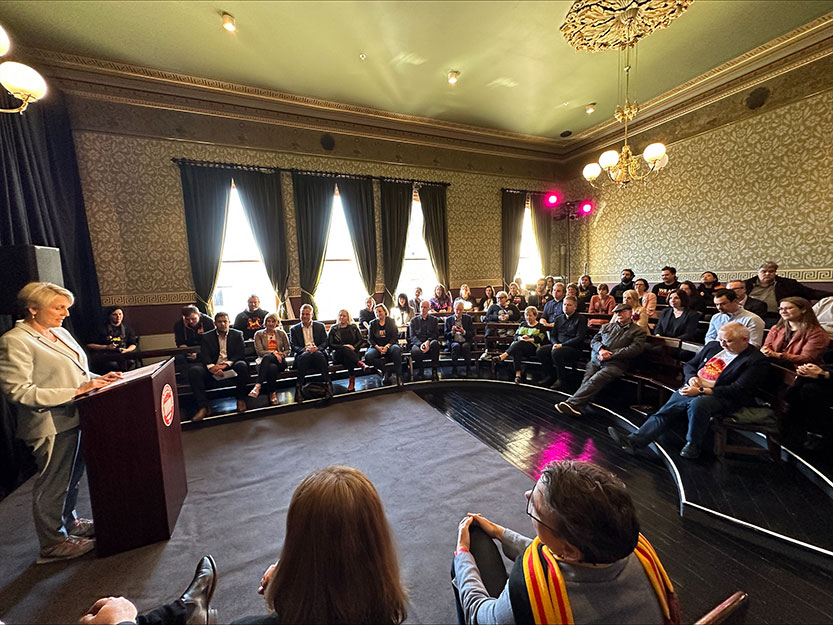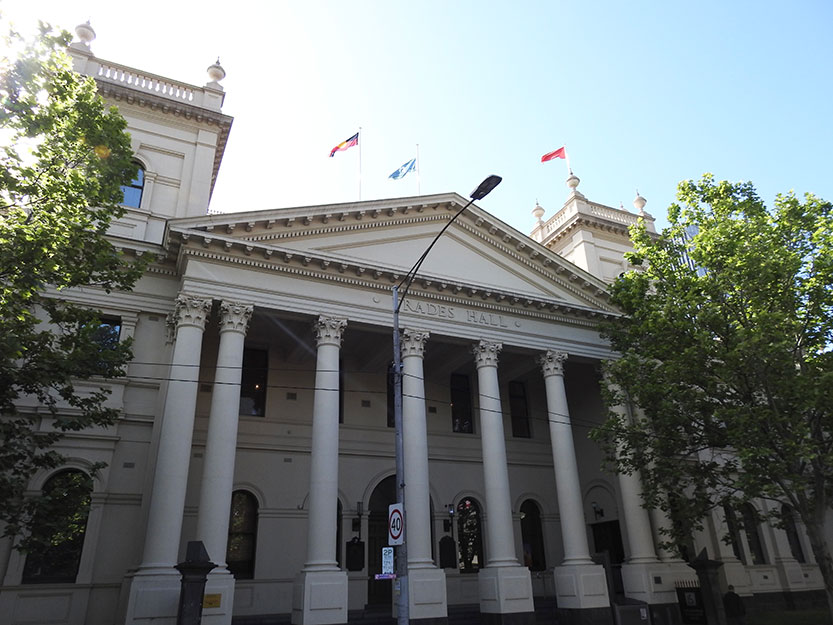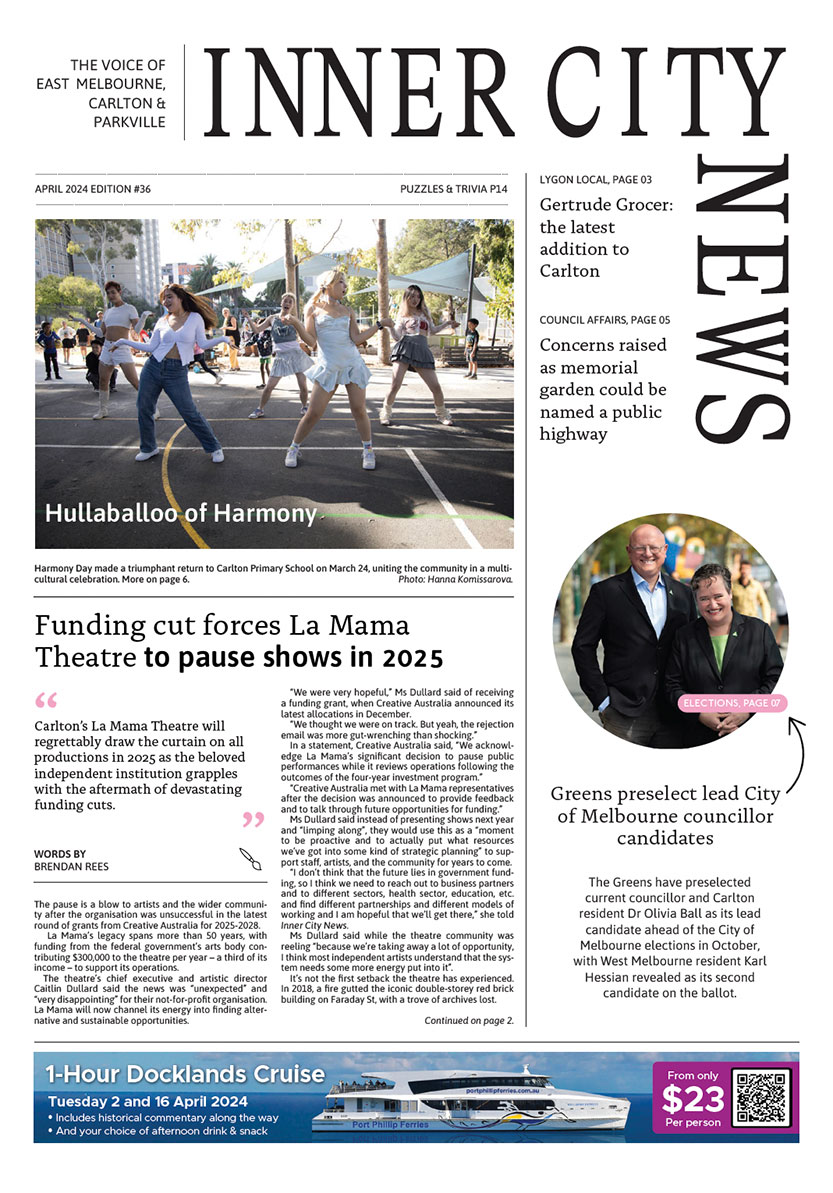Victorian Trades Hall awarded national heritage listing … now, for UNESCO bid
Carlton’s iconic Victorian Trades Hall has been officially placed on the Australian National Heritage List, in what has been described as a “watershed moment for the recognition of working people’s history”.
Built in 1859, the grand structure is the world’s oldest still functioning workers’ hall, witnessing the city’s Labor movement evolve and played a critical role in shaping workers’ rights and social justice in the nation.
In recognition of its rich history, the Federal Minister for the Environment and Water Tanya Plibersek included the Victorian Trades Hall on the National Heritage List on October 11.
The building, located at the corner of Victoria and Lygon streets, is now being considered for inclusion on the World Heritage List as part of an international bid, which is expected to be submitted to UNESCO later this year.
The national heritage listing achievement was marked with Ms Plibersek joining the Victorian Minister for Planning Sonya Kilkenny in hosting a celebratory gathering at Trades Hall.
“Victorian Trades Hall is a crucial part of our national story, as the birthplace of the eight-hour day and generations of political activism and progress,” Ms Plibersek said.

“We have no shortage of national heritage dedicated to the memory of wealth and power. It’s only right that our national estate also includes the lives and achievements of working people.”
Ms Kilkenny echoed this sentiment, saying “Victoria is home to some of Australia’s oldest and most significant heritage sites and the Victorian Trades Hall in the heart of Melbourne is no exception”.
Victorian Trades Hall Council secretary Luke Hilakari expressed his joy at the news, saying the building “symbolises progress like no other”.
“We are enormously proud that this building is receiving recognition for its place in Australian history and its contribution to improving workers’ rights globally,” he said.
The cultural, social and economic impact this democratic institution has had on the lives of Australians cannot be overstated and is worthy of recognition.
“Victorian workers have led the world to win better working conditions. We were the first place to achieve and keep the eight-hour day, ushering in the middle class. We were the first place to elect a working person to a parliament.”
The foundation stone of the present building, designed by prominent architect Joseph Reed, was laid on January 26, 1874. Trades Hall became the headquarters for Victorian unions.
The Albanese Government provided $1.2 million to Victoria to support the progress towards the World Heritage listing of Trades Hall. If successful, it would be the first time that the significance of workers’ assembly halls across the world would be recognised.
City of Melbourne Deputy Lord Mayor Nicholas Reece said Trades Hall was one of the most historically important buildings in Australia and the council was “delighted to be supporting this world heritage bid”.
“We have been a supporter of the heritage listing process for Trades Hall from the very beginning – we provided local heritage listing and then advocated for state and federal heritage listing,” he said.
“In recent years we have seen bluestone footpaths rolled out around Trades Hall and the Eight Hour Park which has really enhanced this historical precinct.”
Carlton Community History Group president Jeff Atkinson said Trades Hall was one of Carlton and Melbourne’s most historically important sites, and that preserving its heritage was “vitally important”.
“It is Australia’s oldest and largest Trades Hall and a symbol of the importance of organised labour within Australian society in the 19th and 20th centuries,” he said.
“Major campaigns and struggles that have had important ramifications for Australian society, such as the Anti Conscription Campaign of 1916-17, were run from there. Activities leading to the birth of the Australian Labor Party took place there, as did the first meeting of the Australian Council of Trade Unions in May 1927.”
“The heritage protection provided by its listing on the Australian Heritage Register is vitally important for a building such as this, which is on the edge of the CBD, where there is so much commercial pressure for high-rise development.” •
Caption: Deputy Lord Mayor Nicholas Reece with Victorian Trades Hall Council secretary Luke Hilakari, Federal Minister for the Environment and Water Tanya Plibersek and the Victorian Minister for Planning Sonya Kilkenny.

Carlton language school championed by Ukrainian refugee




 Download the Latest Edition
Download the Latest Edition